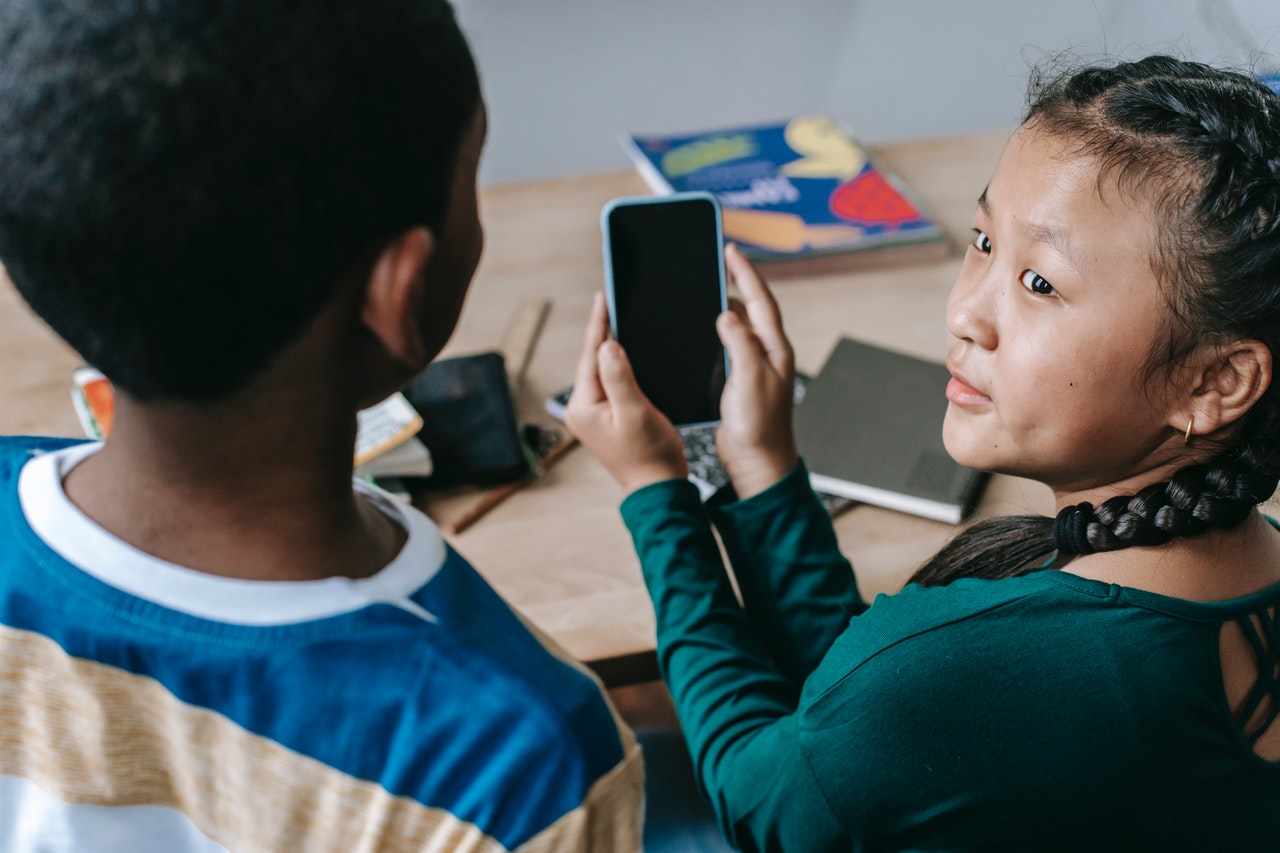From a simple communication tool—to the most popular wish for our kids for Christmas, smartphones made their way to their full glory. A youngster without a smartphone is not common, so students keep them close even while studying. Is that bad or good? There’s no 100% answer, but we must admit that smartphones have already become part of our routines in the virtual world.

Let’s examine some examples of how these pieces of plastic and metal change the way students consume and digest information, form new skills, and make their studying life easier and more fun.
Teachers, parents, attention! The future is mobile
The way kids and older students use their smartphones is a direct consequence of their education and upbringing. Even if parents are strict as prisoners regarding their phone time, the child leaves the house, meets friends, and adopts other models of digital informational hygiene. The way of forbidding doesn’t work as well as permissiveness, as the young person will have no clue how to use the smartphone properly in both cases.
As the future is mobile, it’s the responsibility of all adults to help young people use smartphones for their own good and to complete life goals, such as education. Moreover, according to scientific research, 92% of teachers use smartphones to extract content and materials for their teaching. So why do we expect students not to use their mobile phones?
Science on the go
It’s impossible to demand that because smartphones are extremely handy for learning on the go. We aren’t tied to lectures, libraries, or books anymore. Each learning source is mirrored in the virtual world, with smartphones being mediums. You can even reach a fast essay writing service like Thepensters.com that can help you get custom essays for educational purposes. So, new Edtech service providers enrich the educational landscape that you might not expect to arise in any other environment. We offer you a glance at the ways of learning smartphones give to students.
Microlearning in the subway
Suppose you spend some time each day traveling to your university or workplace. Thanks to smartphones, some people learn new languages by spending those minutes on educational apps or reading materials related to their studying assignments. Others might chat with experts on forums, getting answers faster than looking for them themselves. You see, the speed of search gives you great possibilities to invest even small amounts of time into your education and general knowledge.
Real-world research
When traveling around modern cities, you might stumble upon NFC symbols on the streets or in some sightseeing places. With a smartphone, you can follow the NFC link and read an article or enjoy the video about the real-world object you’ve seen right now.
To keep things even simpler, even 4-year-old children know how to Google almost anything that they see in the real world. Isn’t it the main purpose of smartphones’ existence?
AI learning tutors
These are more advanced educational tools that will be popular soon. Your teacher analyzes how you learn, and AI will also help with this multifactor analysis. As a result, we’ll get more personalized educational plans and more efficient learning.

Modern smartphone-powered classroom
Let’s get more specific: is there a direct need for smartphones in our modern classrooms? Both yes and no. If “yes” means that it’ll be used for more personalized and efficient studying, then no one will doubt smartphones’ usefulness. But the big “no” stands for the power of distraction, shredding of attention, and other side effects of phones on people because of other “alter-ego” of gaming and social media devices.
But how can we use smartphones to generate beneficial effects for students, avoiding typical inconveniences? Let’s browse a pair of examples.
Flipped classroom technique
This is one of the most beloved techniques for modern students—they prepare theory at home and then apply everything they learn in the classroom. Using quizzes, short learning videos, interactive maps, schemas, and even mini-games covering one topic or subject, everything on smartphones and other smart devices, students can learn even faster because of the high motivation, personal interest, and positive emotions they feel during flipped classroom sessions.
From history to anatomy: AR/VR with a smartphone
Your smartphone is the simplest AR/VR engine. For example, you can make VR glasses in minutes using Google Cardboard and your mobile phone and start your interactive lesson in any discipline. It’s a mind-blowing experience when you can see historical events as participants, not only hear or read about them.
Challenges to overcome with smartphones as learning media
As with any media, smartphones aren’t a panacea for all educational challenges. It has its flaws:
- A digital gap: Not all students can access smartphones and reliable internet connectivity. Alternative resources are always in great demand.
- Distractions: Smartphones will always be a distraction in the classroom. Some students may play online games on smartphones instead of learning. They need and can never replace the teacher, who can ignite interest and set classroom discipline.
- Technical difficulties: Technical issues with apps or internet connectivity can disrupt learning.
Smartphones will stay with us until the next technological revolution in communication. Be sure to use them wisely to bridge the gap between you and the treasures of knowledge in your educational journey.